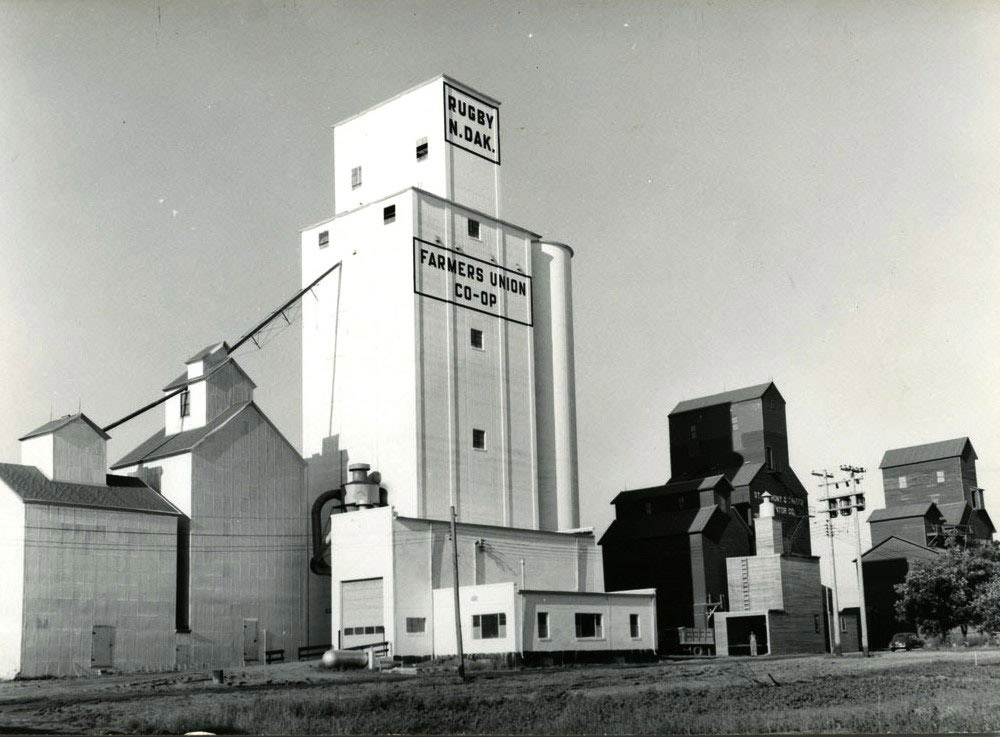The last part of the 19th century was a very hard time for farmers. Crop prices were low, and land values were rising. Many farmers gave up and moved to cities. The children of many farmers said, “No, thanks!” to farming and looked for jobs in town. The “farm problem” was on the minds of farmers, politicians, and many others. In 1902, a group of 10 farmers and businessmen came together with an idea they thought would solve the farm problem. They organized the National Farmers Union.
By 1903, the Farmers Union (NFU) had formed a marketing cooperative. The cooperative would help farmers get the best prices for their crops. (See Image 13.) The NFU also had political interests. The organization supported direct election of senators, federal farm loans, woman suffrage, and federal controls over meat marketing.

The NFU established the Farmers Union Exchange in 1927. The Exchange purchased farm supplies at wholesale prices for its members. These supplies included gasoline and oil. By 1932, the NFU became the second largest distributor of gasoline in the United States. Soon, the Exchange was purchasing a wide range of goods including canned food and appliances.
In 1927, North Dakota farmers organized a state Farmers Union. There were already 13,000 farmer-members in North Dakota, more than any of the other 31 Farmers Union states. The state organization could set up local exchanges and Farmers Union organizations in each county.
When the Rural Electrification Administration was formed in 1935, the North Dakota Farmers Union (NDFU) urged farmers to form electric cooperatives. Later, the Farmers Union helped to initiate telephone cooperatives.
The North Dakota Farmers Union was active politically.Today, Roger Johnson from Turtle Lake, North Dakota, is the president of the National Farmers Union. Mr. Johnson grew up in an NFU family and participated in youth programs. After he became a farmer, he became president of the county NFU and chair of the local co-op. From 1996 to 2009, Roger Johnson served as North Dakota’s Secretary of Agriculture. He was named president of the NFU in 2009. The NDFU suggested legislation to help farmers manage their costs and avoid fraudulent marketing schemes. In 1932, NDFU supported an initiated measure to prohibit corporations from owning farmland. Corporations and government agencies already owned 25 per cent of North Dakota’s farm land. The new law required that these corporations dispose of their North Dakota lands by 1941. Though this law has been challenged, the NDFU has continued to win support for family farm ownership as recently as 1979.
NDFU members also took their political concerns directly to Congress. Several times, members traveled together by bus (later by private plane) to Washington, D. C. to encourage members of Congress to pass a strong farm bill. Three hundred members of the NDFU members traveled to Washington, D.C. in 2000 to promote farming at the Rally for Rural America.
The NDFU sponsored many youth programs. Each county organization had a Junior Youth program.Governor Art Link was a member of the Junior Youth of the NDFU. He stated:
"The Farmers Union program ... was [that] you needed to work together, but you had to be educated, and you had to have proper legislation ... the county had its own ... organization, and they had a junior leader. They would organize camps for the kids to come to, and then at your local meeting you’d give a little pep talk on the cooperative movement." In local meetings and at summer camp young NDFU members learned the importance of the three principles of the NDFU-cooperation, legislation, and education. Summer camp was very popular, bringing as many as 300 campers to one of three different camps.
In 1935, NDFU member Lulu Evanson led the effort to establish a correspondence program for rural students. Those who lived too far from a high school would be able to study for a high school diploma by mail. Students with disabilities and adults who had not had a chance to go to high school could also study by mail. By 1949, 66,000 people had enrolled in correspondence studies.
Why is this important? The Farmers Union is one of the oldest organizations for farmers and one of the most successful cooperatives in the United States. The National Farmers Union and its North Dakota chapters continue to engage in community affairs through their three-part philosophy of cooperation, legislation, and education. The NDFU has had an important role in shaping legislation and rural education in North Dakota.


